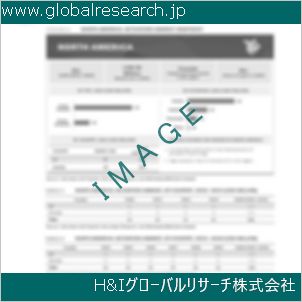Table of Contents
1 Industry Overview of Hafnium
1.1 Definition and Specifications of Hafnium
1.1.1 Definition of Hafnium
1.1.2 Specifications of Hafnium
1.2 Classification of Hafnium
1.3 Applications of Hafnium
1.3.1 Nuclear Application
1.3.2 Non-Nuclear Application
1.4 Industry Chain Structure of Hafnium
1.5 Industry Overview and Major Regions Status of Hafnium
1.5.1 Industry Overview of Hafnium
1.5.2 Global Major Regions Status of Hafnium
1.6 Industry Policy Analysis of Hafnium
1.7 Industry News Analysis of Hafnium
2 Manufacturing Cost Structure Analysis of Hafnium
2.1 Raw Material Suppliers and Price Analysis of Hafnium
2.2 Equipment Suppliers and Price Analysis of Hafnium
2.3 Labor Cost Analysis of Hafnium
2.4 Other Costs Analysis of Hafnium
2.5 Manufacturing Cost Structure Analysis of Hafnium
2.6 Manufacturing Process Analysis of Hafnium
3 Technical Data and Manufacturing Plants Analysis of Hafnium
3.1 Capacity and Commercial Production Date of Global Hafnium Major Manufacturers in 2023
3.2 Manufacturing Plants Distribution of Global Hafnium Major Manufacturers in 2023
3.3 R&D Status and Technology Source of Global Hafnium Major Manufacturers in 2023
3.4 Raw Materials Sources Analysis of Global Hafnium Major Manufacturers in 2023
4 Capacity, Production and Revenue Analysis of Hafnium by Regions, Types and Manufacturers
4.1 Global Capacity, Production and Revenue of Hafnium by Regions 2019-2024
4.2 Global and Major Regions Capacity, Production, Revenue and Growth Rate of Hafnium 2019-2024
4.3 Global Capacity, Production and Revenue of Hafnium by Types 2019-2024
4.4 Global Capacity, Production and Revenue of Hafnium by Manufacturers 2019-2024
5 Price, Cost, Gross and Gross Margin Analysis of Hafnium by Regions, Types and Manufacturers
5.1 Price, Cost, Gross and Gross Margin Analysis of Hafnium by Regions 2019-2024
5.2 Price, Cost, Gross and Gross Margin Analysis of Hafnium by Types 2019-2024
5.3 Price, Cost, Gross and Gross Margin Analysis of Hafnium by Manufacturers 2019-2024
6 Consumption Volume, Consumption Value and Sale Price Analysis of Hafnium by Regions, Types and Applications
6.1 Global Consumption Volume and Consumption Value of Hafnium by Regions 2019-2024
6.2 Global and Major Regions Consumption Volume, Consumption Value and Growth Rate of Hafnium 2019-2024
6.3 Global Consumption Volume and Consumption Value of Hafnium by Types 2019-2024
6.4 Global Consumption Volume and Consumption Value of Hafnium by Applications 2019-2024
6.5 Sale Price of Hafnium by Regions 2019-2024
6.6 Sale Price of Hafnium by Types 2019-2024
6.7 Sale Price of Hafnium by Applications 2019-2024
6.8 Market Share Analysis of Hafnium by Different Sale Price Levels
7 Supply, Import, Export and Consumption Analysis of Hafnium
7.1 Supply, Consumption and Gap of Hafnium 2019-2024
7.2 Global Capacity, Production, Price, Cost, Revenue, Supply, Import, Export and Consumption of Hafnium 2019-2024
7.3 USA Capacity, Production, Price, Cost, Revenue, Supply, Import, Export and Consumption of Hafnium 2019-2024
7.4 EU Capacity, Production, Price, Cost, Revenue, Supply, Import, Export and Consumption of Hafnium 2019-2024
7.5 China Capacity, Production, Price, Cost, Revenue, Supply, Import, Export and Consumption of Hafnium 2019-2024
7.6 Japan Capacity, Production, Price, Cost, Revenue, Supply, Import, Export and Consumption of Hafnium 2019-2024
8 Major Manufacturers Analysis of Hafnium
8.1 Manufacturer One
8.1.1 Company Profile
8.1.2 Product Picture and Specifications
8.1.2.1 Type I
8.1.2.2 Type II
8.1.2.3 Type III
8.1.3 Capacity, Production, Price, Cost, Gross and Revenue
8.1.4 Contact Information
8.2 Manufacturer Two
8.2.1 Company Profile
8.2.2 Product Picture and Specifications
8.2.2.1 Type I
8.2.2.2 Type II
8.2.2.3 Type III
8.2.3 Capacity, Production, Price, Cost, Gross and Revenue
8.2.4 Contact Information
8.3 Manufacturer Three
8.3.1 Company Profile
8.3.2 Product Picture and Specifications
8.3.2.1 Type I
8.3.2.2 Type II
8.3.2.3 Type III
8.3.3 Capacity, Production, Price, Cost, Gross and Revenue
8.3.4 Contact Information
8.4 Manufacturer Four
8.4.1 Company Profile
8.4.2 Product Picture and Specifications
8.4.2.1 Type I
8.4.2.2 Type II
8.4.2.3 Type III
8.4.3 Capacity, Production, Price, Cost, Gross and Revenue
8.4.4 Contact Information
8.5 Manufacturer Five
8.5.1 Company Profile
8.5.2 Product Picture and Specifications
8.5.2.1 Type I
8.5.2.2 Type II
8.5.2.3 Type III
8.5.3 Capacity, Production, Price, Cost, Gross and Revenue
8.5.4 Contact Information
…
9 Marketing Trader or Distributor Analysis of Hafnium
9.1 Marketing Channels Status of Hafnium
9.2 Traders or Distributors with Contact Information of Hafnium by Regions
9.3 Ex-work Price, Channel Price and End Buyer Price Analysis of Hafnium
9.4 Regional Import, Export and Trade Analysis of Hafnium
10 Industry Chain Analysis of Hafnium
10.1 Upstream Major Raw Materials Suppliers Analysis of Hafnium
10.1.1 Major Raw Materials Suppliers with Contact Information Analysis of Hafnium
10.1.2 Major Raw Materials Suppliers with Supply Volume Analysis of Hafnium by Regions
10.2 Upstream Major Equipment Suppliers Analysis of Hafnium
10.2.1 Major Equipment Suppliers with Contact Information Analysis of Hafnium
10.2.2 Major Equipment Suppliers with Product Pictures Analysis of Hafnium by Regions
10.3 Downstream Major Consumers Analysis of Hafnium
10.3.1 Major Consumers with Contact Information Analysis of Hafnium
10.3.2 Major Consumers with Consumption Volume Analysis of Hafnium by Regions
10.4 Supply Chain Relationship Analysis of Hafnium
11 Development Trend of Analysis of Hafnium
11.1 Capacity, Production and Revenue Forecast of Hafnium by Regions and Types
11.1.1 Global Capacity, Production and Revenue of Hafnium by Regions 2024-2029
11.1.2 Global and Major Regions Capacity, Production, Revenue and Growth Rate of Hafnium 2024-2029
11.1.3 Global Capacity, Production and Revenue of Hafnium by Types 2024-2029
11.2 Consumption Volume and Consumption Value Forecast of Hafnium by Regions, Types and Applications
11.2.1 Global Consumption Volume and Consumption Value of Hafnium by Regions 2024-2029
11.2.2 Global and Major Regions Consumption Volume, Consumption Value and Growth Rate of Hafnium 2024-2029
11.2.3 Global Consumption Volume and Consumption Value of Hafnium by Types 2024-2029
11.2.4 Global Consumption Volume and Consumption Value of Hafnium by Applications 2024-2029
11.3 Supply, Import, Export and Consumption Forecast of Hafnium
11.3.1 Supply, Consumption and Gap of Hafnium 2024-2029
11.3.2 Global Capacity, Production, Price, Cost, Revenue, Supply, Import, Export and Consumption of Hafnium 2024-2029
11.3.3 USA Capacity, Production, Price, Cost, Revenue, Supply, Import, Export and Consumption of Hafnium 2024-2029
11.3.4 EU Capacity, Production, Price, Cost, Revenue, Supply, Import, Export and Consumption of Hafnium 2024-2029
11.3.5 China Capacity, Production, Price, Cost, Revenue, Supply, Import, Export and Consumption of Hafnium 2024-2029
11.3.6 Japan Capacity, Production, Price, Cost, Revenue, Supply, Import, Export and Consumption of Hafnium 2024-2029
12 New Project Investment Feasibility Analysis of Hafnium
12.1 New Project SWOT Analysis of Hafnium
12.2 New Project Investment Feasibility Analysis of Hafnium
13 Conclusion of the Global Hafnium (CAS 7440-58-6) Industry 2024 Market Research Report
| ※参考情報 ハフニウム(Hafnium)は、周期表の第4周期に位置する遷移金属で、原子番号は72、化学記号はHfです。ハフニウムは1923年にデンマークの化学者、ジェームズ・ギー(Zirconium)とオスカー・ギー(Oskar G. H. Fischer)によって初めて発見されました。化学的な性質は、同じ周期にあるジルコニウム(Zr)に非常に似ており、しばしば同じ鉱石から生成されます。ハフニウムの名称はラテン語で「コペンハーゲン」を意味する「Hafnia」に由来しています。 ハフニウムの主な特徴としては、密度が高く、融点が非常に高いことが挙げられます。具体的には、融点は約2233度Cであり、沸点は4602度Cです。この性質から、ハフニウムは高温環境での安定性が求められる用途に適しています。また、ハフニウムは耐食性が高く、酸化物薄膜を形成することで表面が保護されますが、高温条件下では酸化されやすくなります。 ハフニウムは自然界においては非常に希少な元素で、主にジルコニウム鉱石から分離されます。ハフニウムは存在比が低く、主に他の金属と共存しているため、精製には高度な技術が必要です。ハフニウムの同位体にはいくつかの種類があり、最も安定した同位体はHf-178で、これは自然界では存在する量が比較的多いとされています。 ハフニウムの用途は多岐にわたります。最も重要な用途の一つは、核反応炉や原子力発電所における中性子吸収材としての役割です。ハフニウムは中性子を効果的に吸収する特性を持っており、そのため、核反応の調整や制御に使用されます。また、ハフニウム合金は、高温環境下でも安定した機械的特性を保持するため、航空宇宙産業や原子力産業でも広く利用されています。 さらに、ハフニウムは半導体業界でも注目されています。特に、ハフニウム酸化物(HfO2)は高誘電率の絶縁体として利用され、トランジスタやメモリデバイスの製造において重要な材料です。ハフニウム酸化物を使用することで、デバイスのサイズを小さくし、高いパフォーマンスを維持することが可能になります。これは、ムーアの法則に従った技術進歩に寄与しています。 ハフニウムの関連技術としては、分離技術や合金開発が挙げられます。ハフニウムを高純度で取り出すための技術としては、フローテーション法や電気化学的方法などがあり、これらは精製プロセスの効率化に寄与しています。さらに、ハフニウム合金の開発には、溶接技術や熱処理技術が重要であり、加工性を向上させるための研究も進められています。 ハフニウムに関連する環境的な側面についても考える必要があります。ハフニウムは生態系において特に有害な影響を与えることはないとされていますが、工業的なプロセスでの取り扱いや廃棄物処理には注意が必要です。特に、ハフニウムを含む製品や材料に関しては、リサイクルや再利用の観点からも持続可能な方法が求められています。 総じて、ハフニウムはさまざまな産業において重要な役割を果たしており、その特異な物理的・化学的特性によって多様な応用を持っています。航空宇宙や原子力産業はもちろん、先端的な電子機器の製造など、今後もハフニウムの利用は続くと考えられます。それに伴って新たな技術やプロセスの開発が進められ、地球環境との調和を図りながら、持続可能な利用が求められるでしょう。 |
❖ 免責事項 ❖
http://www.globalresearch.jp/disclaimer

-gr.jpg)










